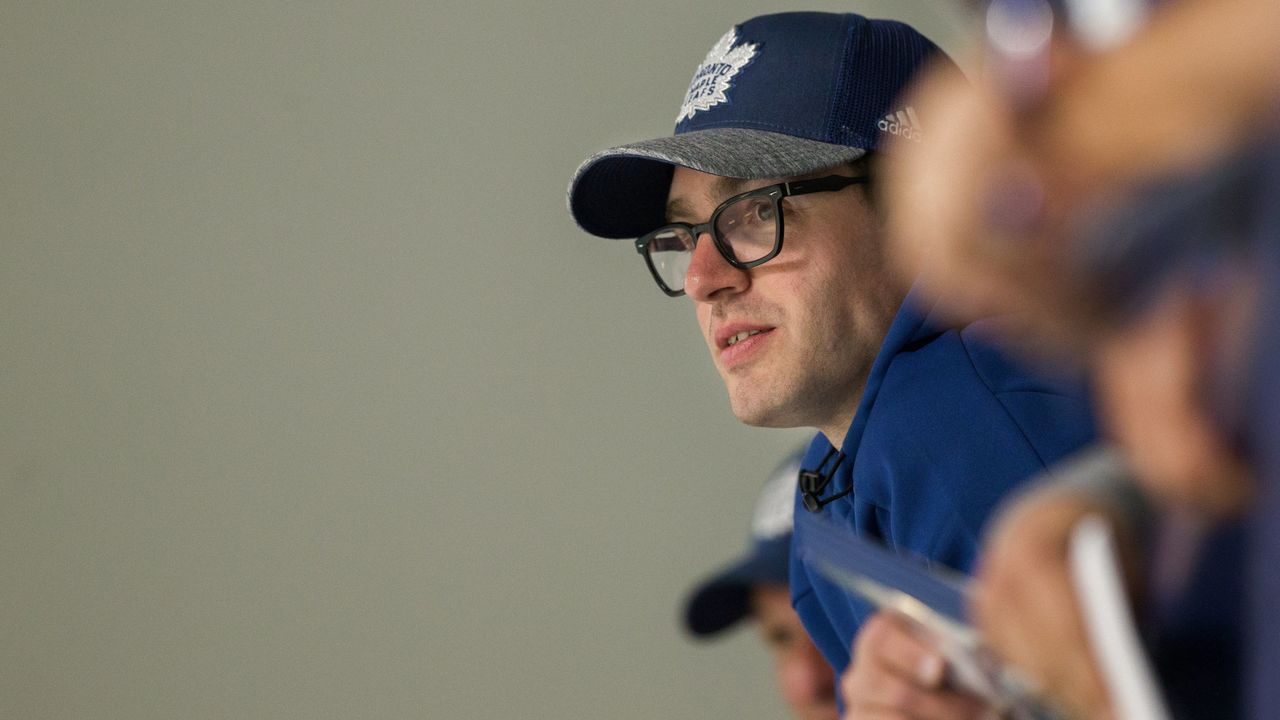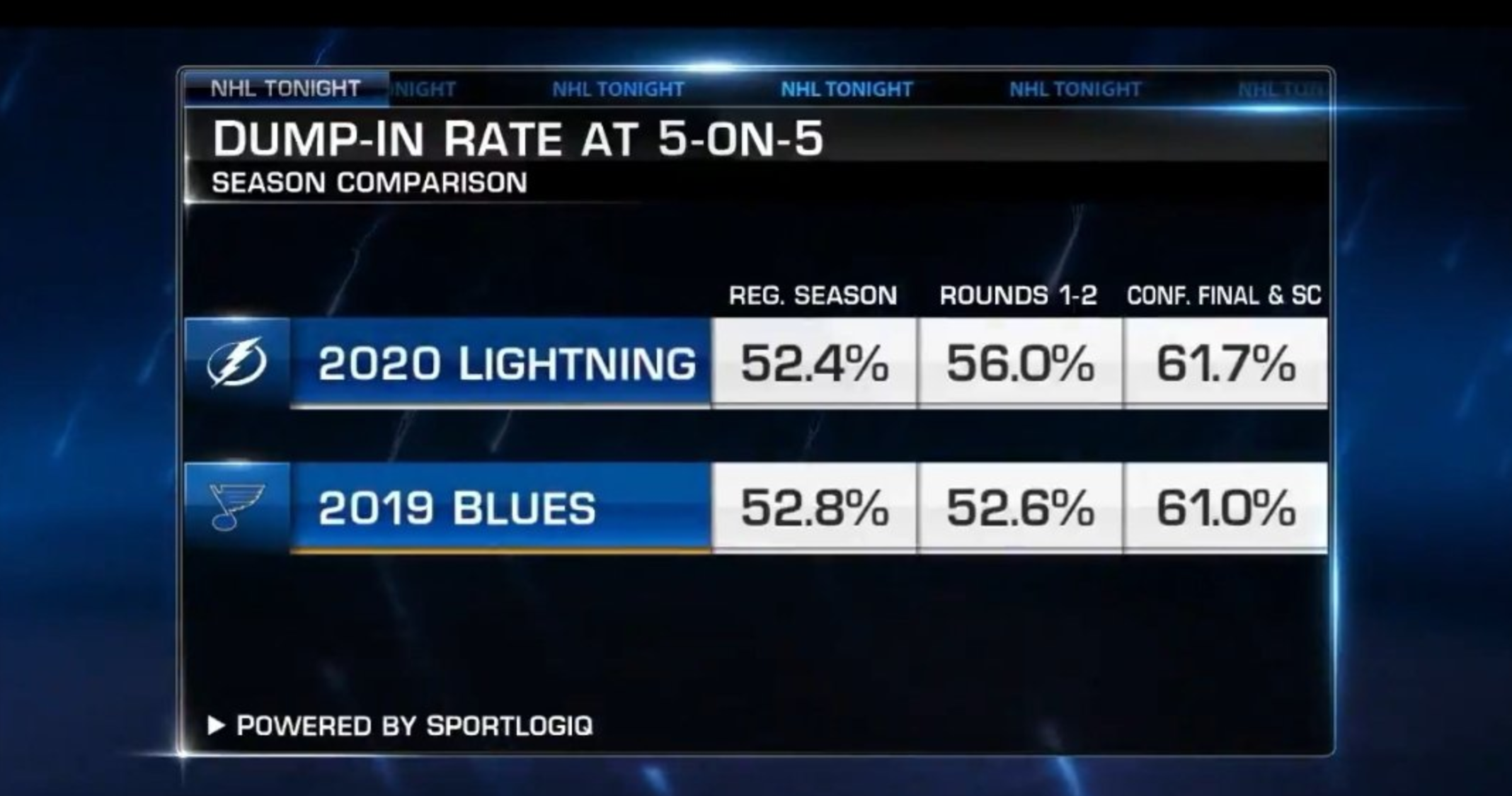Kyle Dubas has told the story before.
In their regular seats just inside the blue line at the Sault Memorial Gardens, Dubas’ grandfather, Walter — steel worker by day and, between the years of 1960-67, coach of the local OHL team by night — would tell Kyle, “Listening to the press and the fans is your first step toward sitting with the press and the fans.”
My guess is Dubas has been thinking a lot about those words since the Leafs’ exit from the playoffs this past August. He may have even repeated the quote to himself before the yesterday’s draft, where Leafs brass assembled a 2020 class with more than its fair share of 5’9-11 winger talent.
No question, Dubas is steadfast in his vision and, in his own words, willing to stake his career on it.
Dubas has also recently started to use the phrase, “harder to play against,” as a mission statement for the Leafs’ 2020 offseason in the wake of the team’s fourth straight first-round playoff exit. While he’s referring to internal growth in one part, he’s also talked about reshaping the bottom of the lineup with this end goal in mind. Multiple times in the past — including last night after the draft ended — he has mentioned that size and toughness can always be acquired via free agency and trade, whereas impact talent often cannot.
Some onlookers are calling BS on his harder-to-play-against commitment level after every Denis Malgin re-up or 5’9, 146-pound draft selection (that’s future Leaf Joe Miller’s real height and weight). But I genuinely believe it’s his goal tomorrow when the free agency period opens.
The thing is, though, we don’t have an agreed-upon definition of terms. Your “hard to play against” might not be my hard to play against or Dubas’ hard to play against. And if Dubas is going to work toward this goal, he is undoubtedly going to do it his way: without sacrificing — probably not even a little bit — the team’s commitment to out-skilling its opponents and controlling puck possession.
How does it all reconcile with the harder-to-play-against goal, then, exactly?
I favour the argument that Dubas shouldn’t go out and overpay for a Wayne Simmonds or Patrick Maroon type, jettisoning an Andreas Johnsson to do it, just to tick a box and satiate the fan base. Simmonds (in my view) for anything more than a 1×1-1.5 situation — in which he’d arrive eagerly embracing a fourth-line forward role a la Jason Spezza — would be a mistake, and even if he agreed to such terms, I’m not convinced he would represent enough of an impact on his own to truly move the needle.
However, the following also has to be acknowledged, in my view:
1. The Leafs cannot have a top-six full of supremely skilled young talent that is still learning what it takes to be hard to play against in the playoffs — which I do believe will happen organically… we saw clear signs of it with Auston Matthews this year, albeit Marner and Nylander looked like they had more learning to do vs. Columbus — while also having two bottom-six lines that are watered-down versions of their top six lines, aren’t hard to play against, and lack a clear identity.
2. If we were guilty of it before, we cannot live in a fantasy world where we think long as a team is at a 52% CF in the regular season, it’s controlling play, and that in itself is what makes a team hard to play against. It is in one sense, sure, but the game always changes in the playoffs and becomes progressively harder with each series. A team needs to be able to switch gears, dump it in 60% of the time if it’s forced to, and generate the hard offense and offensive-zone time.
3. A checking line that knows its role, can grind, take a share of the matchup burden when needed, chip in some offensively, and set up the top six with offensive-zone faceoffs and the occasional power play is critical for playoff success. The Leafs had the dream center for this in Nazem Kadri, although they never put together the full line. Last year, the bottom six was a dog’s breakfast and lacking in proper centermen.
Sheldon Keefe briefly received a lift out of his fourth line in Games 3 and 4 of the Columbus series, but he never really gave them the ice time needed to get them rolling in games properly, leaning hard on his loaded top six. In games where the team really needed an ugly one from down the lineup, it never came — an issue versus Boston in 2019 as well. It does sound like Keefe wants to use four lines more than he did going forward based on his comments yesterday:
“We know that we need to be a team that is difficult to play against. We talk about that. Part of it is the player acquisition part. Part of it is the internal growth… We need to look to solidify our defense, and then just looking at the depth of the forward group, we need to be a team that is more cohesive and more complete and relies on lines one through four all the way through. We need to build our team with that in mind.“
4. The right defense piece that can play the body, jam up lanes, and wear on opposition forwards on the boards and around the net over a playoff series has real value as long as they’re reasonably savvy defensively and aren’t total liabilities with the puck.
We aren’t talking about hard-to-get studs here. For instance — and this is said with loads of 20/20 hindsight knowing Barrie was an unforeseen travesty on the ice — the Leafs absolutely would’ve been better off with Ron Hainsey on their blue line over Barrie this past season. Again, we’re not talking about Chris Pronger; simply someone with the ability to cut off an easy passage from the left to right side of the ice behind the net, get in shooting lanes, and box out — and with good support from the forwards, most times able to execute the short pass under pressure that is needed to break out. The Leafs need an experienced defenseman or two who just do those basics well enough consistently enough.
With the above in mind, names like Mikko Koivu, Travis Hamonic, Chris Tanev, Trevor van Riemsdyk, Radko Gudas, Zach Bogosian, TJ Brodie, Vlad Namestnikov, Kyle Clifford, and Mattias Janmark pique my interest to varying degrees among the UFA pool — to speak nothing of the trade market (David Savard, MacKenzie Weegar). What does Dubas view as the solution, though? Just as relevant, what can he make work under the flat cap?
In a few hours from now, we’ll start to find out.































![New Leaf Anthony Stolarz on the opportunity in Toronto: “In Florida, I knew my role as a backup… Now, [Joseph Woll] and I are competing for starts… As a goalie, that’s all you can ask for” Anthony Stolarz, Stanley Cup win, now Maple Leaf](https://mapleleafshotstove.com/wp-content/uploads/2024/07/anthony-stolarz-sc-100x70.jpg)
